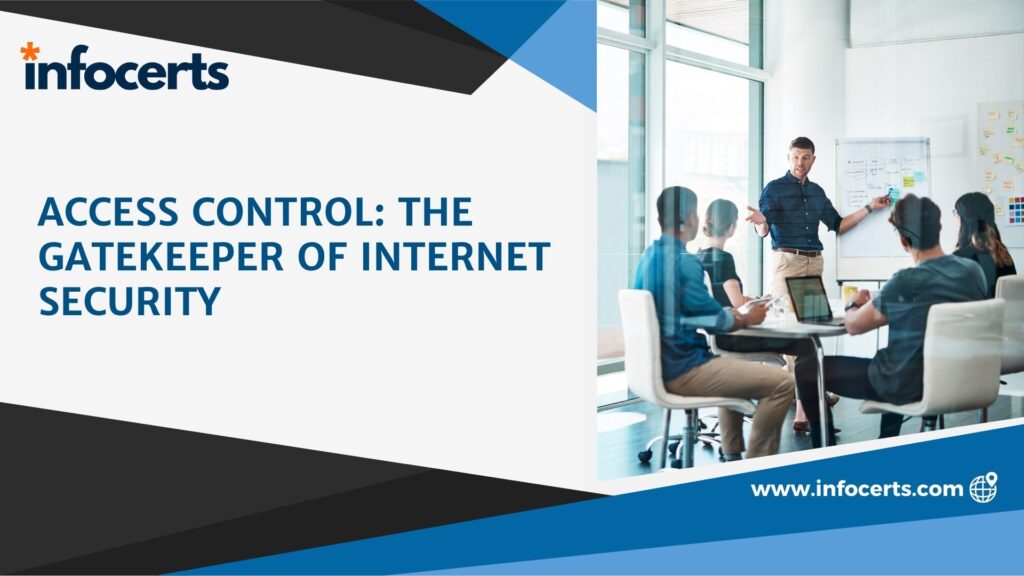In the ever-evolving landscape of cybersecurity, access control stands as a critical pillar safeguarding the integrity and confidentiality of internet-facing applications. Access control encompasses various mechanisms designed to regulate who can view or use resources in a computing environment. The ISO 27032:2023 standard offers comprehensive guidelines to enhance the security posture of organizations by focusing on internet security. This blog delves into the significance of access control, the various types of access control measures, their implementation, and best practices for crafting robust access control policies and procedures.
Understanding Access Control and Its Importance
Access control is the process of determining and enforcing who can access what resources in a system. It is pivotal in protecting sensitive data from unauthorized access and ensuring that only legitimate users can perform specific actions. The importance of access control in internet security includes:
- Protection against unauthorized access: Ensuring only authenticated users gain access.
- Safeguarding sensitive information: Preventing data breaches and leaks.
- Compliance: Adhering to legal and regulatory requirements.
Types of Access Control Measures
Access control mechanisms are broadly categorized into three types:
- Authentication
- Authorization
- Accounting
Authentication
Authentication is the process of verifying the identity of a user. Methods of authentication include:
- Passwords: The most common form, though vulnerable to attacks.
- Biometrics: Fingerprints, facial recognition, providing higher security.
- Two-Factor Authentication (2FA): Combining two methods, such as a password and a mobile code.
Authorization
Authorization determines what an authenticated user is allowed to do. This involves:
- Role-Based Access Control (RBAC): Access based on user roles.
- Attribute-Based Access Control (ABAC): Access based on user attributes.
- Discretionary Access Control (DAC): Access rights based on the identity of the user and discretionary rules.
Accounting
Accounting, or auditing, involves tracking user activities to detect and respond to security breaches. This includes:
- Log Management: Recording user activities.
- Monitoring: Continuous observation of system activities.
- Reporting: Generating reports on user activities for analysis.
Implementing Access Control for Internet-Facing Applications
To secure internet-facing applications, organizations should implement the following measures:
- Use Strong Authentication Mechanisms: Implement multi-factor authentication to enhance security.
- Regularly Update Access Control Policies: Ensure policies are current and reflect the latest security practices.
- Conduct Regular Audits: Regularly review and audit access logs to identify and address any anomalies.
- Implement Principle of Least Privilege: Users should only have access to resources necessary for their roles.
Best Practices for Access Control Policy and Procedure
Creating effective access control policies requires a systematic approach:
- Define Clear Policies: Establish clear access control policies outlining user roles and permissions.
- Educate Employees: Regular training on access control policies and security practices.
- Regularly Review Access Rights: Periodically review and adjust user access rights based on changes in roles or responsibilities.
- Employ Automated Tools: Utilize automated tools for monitoring and enforcing access control policies.
| Best Practice | Description |
|---|---|
| Define Clear Policies | Establish specific policies for user access. |
| Educate Employees | Train employees on access control and security. |
| Regularly Review Access | Adjust access based on role changes. |
| Use Automated Tools | Implement tools for monitoring and enforcing policies. |
At INFOCERTS, we offer comprehensive training on ISO 27032:2023, empowering IT professionals to master access control and other critical aspects of internet security. Call us at +91 70455 40400 to enroll in our course today.
Access control is the gatekeeper of internet security, playing a vital role in protecting digital assets from unauthorized access. By implementing robust access control measures and adhering to best practices, organizations can significantly enhance their cybersecurity posture and safeguard sensitive information against evolving threats. For a deeper dive into these topics, consider enrolling in our detailed course on ISO 27032:2023.
This blog post outlines the essential elements of access control, referencing the ISO 27032:2023 standard to emphasize the importance and implementation of robust security measures. For more detailed guidance, IT professionals are encouraged to explore further training and resources.

